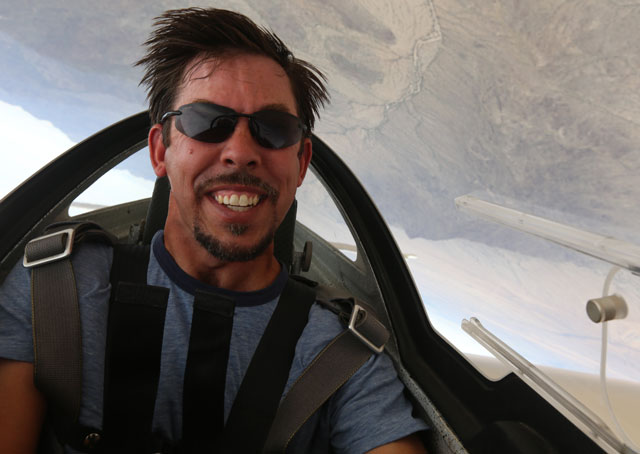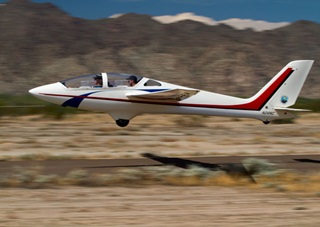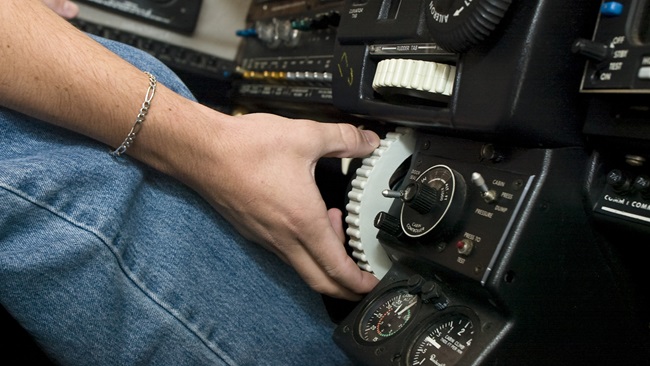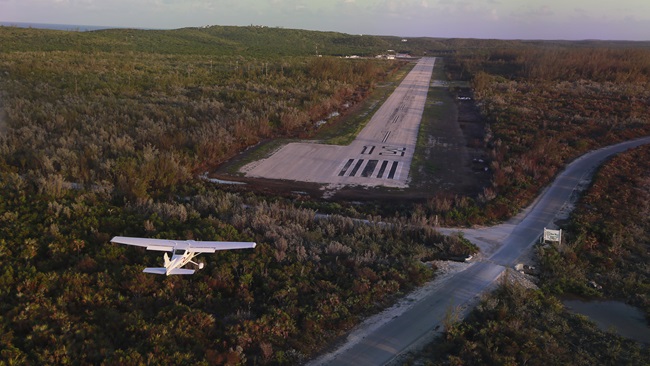
I had never experienced total silence in a moving aircraft until figure three, riding along with five-time national champion Jason Stephens at the controls, flying the 2015 International Aerobatic Club Glider Unlimited Known sequence. This figure (maneuver) starts inverted on the horizontal plane, with a push to a vertical upline, then a tailslide followed by a quarter-roll on the downline to the Y axis, and a pull to horizontal, end of figure. Wow.
Pause now as you consider we did this with no engine. And that it was the third figure of a seven-figure sequence. And it was not the most difficult maneuver in that sequence, not by a longshot. And Stephens, owner of Arizona Soaring based at the Estrella Sailport in Maricopa, Arizona (just south of Phoenix), had to download the sequence on his phone as we strapped in because he had never flown it before. It is the 2015 IAC Unlimited Glider Known Program, and he will need to be near-perfect with it in less than two weeks at the U.S. National Aerobatic Championships to take a sixth title (along with two other programs). It was less than two weeks before the championships commence, and he was flying the known for the first time. Let that sink in.
It helps, he noted, that he’s flown all of these figures many times before; there is nothing new for him in this routine. This is where you can get with aerobatics if you practice and compete and practice and compete … for a really, really long time. I hate the fact that he’s younger than I am, though I really do like the guy.
I learned a lot in just a few minutes. Airplanes talk to you, gliders whisper. That moment of silence at the top of a vertical upline was just that, but to Stephens there was a nuance to it. He told me after the flight that he can still be surprised, thinking a tailside has already begun until he wiggles the elevators just a little and finds a positive control response, telling him to wait just a little longer. (And producing a motion imperceptible from the ground, where watchful judges are ready to pounce on the smallest deviation.)
In Stephens I found a different animal than what I’ve become, but a vision of what I could become if I spend enough time in the cockpit and develop a lot more skill. Something to shoot for.

Aerobatics is a progression. In my first contest, at the Primary level (once known as Basic) I had to complete six maneuvers in the aerobatic box: a 45-degree upline, a one-turn spin, a half Cuban, a loop, a 180-degree aerobatic turn (defined as a turn with more than 60 degrees of bank), and a slow roll. In the past three years, I’ve been wrapping my mind around a more difficult sequence, with 10 maneuvers, and I’ve got high hopes I’ll be able to tackle something a bit more complicated in the future.
First, however, I’ve got to get the timing down, the cadence of the sequence that comes so naturally to Stephens he doesn’t need to call the moves out loud (as I still struggle to do).
Timing is everything in competition aerobatics; control inputs must be carefully timed to produce the desired result. I have long had a tendency to rush, without even realizing it, particularly at certain points in the sequence. A half-Cuban starts with a partial loop that must be stopped on the inverted 45-degree downline, with a pause to draw a line before rolling to upright, then another pause to draw a line of equal length after the roll before pulling to horizontal. This is where point-of-view cameras can offer real help. I use a GoPro (though virtually any brand will do the job), and reviewing the footage of my latest practice flight back home revealed that the timing that I thought was on target was actually quite off, that I still have a tendency to roll upright too quickly after stopping on the 45-degree downline. That will cost me points if I persist in doing it in just over a week at the national contest.
Stephens agreed that video has its limits, with the wide angle distorting perspective and making it difficult to judge the accuracy of vertical and 45-degree lines. But the video can call more obvious errors to attention, and help focus the next practice, and the next competition flight. Stephens said video shared by Lukas von Atzigen, one of the three or four Unlimited glider pilots expected at the national championship, made it clear that the roller turn Atzigen had flown included a roll in the wrong direction. (Competitors throughout the competition ranks tend to help each other practice and sharpen skills, an element of the tradition of sportsmanship that makes completion that much more rewarding—and competitive.)
High over the Arizona desert, amid the moments of silence followed by the sound of rushing wind, I saw what’s possible. His timing was impeccable.



